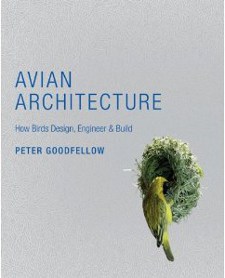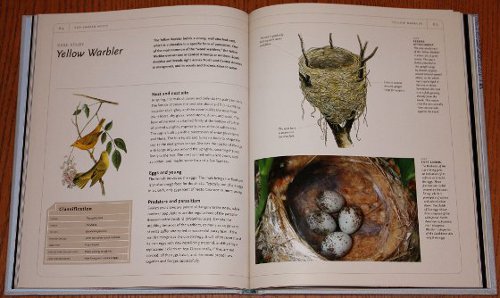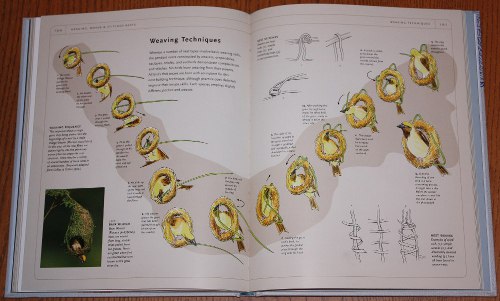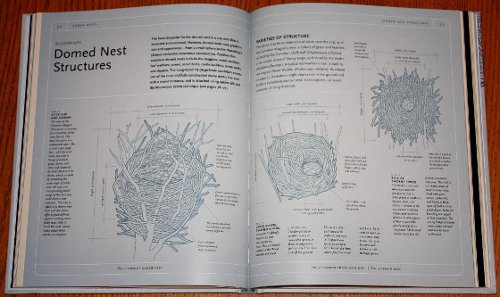Reviewed by Grant McCreary on June 30th, 2011.
Birds do incredible things. The more I read about birds, the more amazing things I find out about them. But one of the most wonderful things about birds is something that virtually everyone is aware of and, I daresay, takes for granted: birds build nests.
The structures themselves are marvelous feats of engineering. Some are larger than a car, while others would fit in a child’s hand. Many are made up of sticks and twigs, as one usually thinks of a nest. But many other types of building materials are used. There is one commonality, however, one question that begs an answer – how? How do birds – creatures with no opposable thumbs, or even useful hands for that matter – build these elaborate structures? I’ve been wondering that for a long time, but now (finally) have the answer in Avian Architecture: How Birds Design, Engineer, and Build.
Peter Goodfellow divides his very-welcomed book into chapters based on the type of structure constructed:
- Scrape Nests
- Holes and Tunnels
- Platform Nests
- Aquatic Nests
- Cup-shaped Nests
- Domed Nests
- Mud Nests
- Hanging, Woven and Stitched Nests
- Mound Nests
- Colonies and Group Nests
- Courts and Bowers
- Edible Nests and Food Stores
Each begins with a two-page overview of the nest type. This is followed by some “blueprints” – drawings showing the architectural characteristics of the nest type, annotated with dimensions and other key information. Another dual-paged spread details the materials and features of a particular species’ nest. The chapters conclude with one to four “case studies” that spotlight the nests and nesting behavior of representative species.
Additionally, select chapters include a section on building techniques. This is my favorite part of the book, as it uses step-by-step illustrations to show exactly how birds build a particular style of nest. It’s still hard for me to grasp how birds manage to accomplish this, but these sections have greatly aided my understanding. The only thing better would be a high-resolution, up-close, painstakingly-edited video of a bird doing its thing.
Although the inclusion of blueprints seems a natural fit for a book with “architecture” in its title, it runs the risk of being gimmicky. But even though the blueprint drawings are simplistic, I found this feature very informative. In fact, scarcely a page was turned in Avian Architecture that I did not learn something new and incredible. Here are just a few fascinating tidbits:
- The Yellow-rumped Thornbill of Australia builds a “false nest” on top of its domed nest in order to confuse predators.
- There’s a bird named Firewood Gatherer. If you want to know why, just take one look at its nest.
- Sooty-capped Hermits (a kind of hummingbird) use a counterweight attached to the bottom of their nest in order to keep it balanced.
You may have noticed in the chapter list above that Avian Architecture also covers bird constructs other than nests. “Courts and Bowers” depicts the marvelous architecture of bowerbirds, a family found in New Guinea and Australia. Male bowerbirds build elaborate structures and decorate them with colorful objects as a part of the courtship process. To me, these bowers are one of the most astonishing things in the entire class Aves. The final chapter is a hodgepodge of two unrelated topics: the edible nests of some swiftlets and the food stores of woodpeckers and sapsuckers.
This is an attractive, well-designed book, illustrated throughout with great photographs and drawings. The latter are essential as they can show things, like a cross-section of the Horned Coot’s aquatic mound nest, that photographs cannot capture.
Recommendation
I’ve been waiting a long while for a book like Avian Architecture. I was not disappointed. It is nothing short of a revelation to discover not only the variety of structures that birds build, but also (especially) how they are constructed.
Disclosure: I get a small commission for purchases made through links in this post.
Disclosure: The item reviewed here was a complementary review copy provided by the publisher. But the opinion expressed here is my own, it has not been influenced in any way.








[…] Book and Review on Birds! Review: Avian Architecture: How Birds Design, Engineer, and Build Reply With Quote + Reply to Thread « Previous Thread | […]